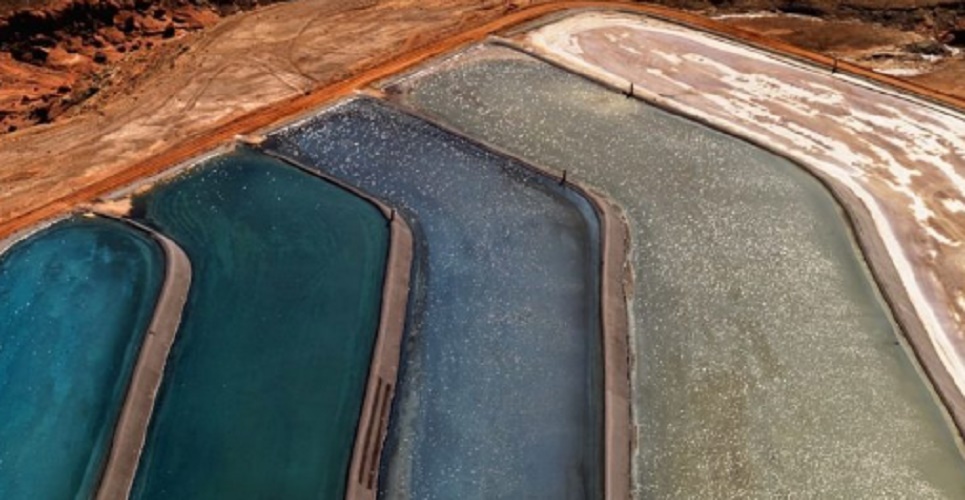What is a dam?
We explain what a dam is, the parts that compose it and how it is classified. In addition, differences with dike and reservoir.
What is a dam?
A dam is a structure that aims to divert or stop water , or both, to take advantage of it or prevent it from causing damage.
It consists of a dike or wall that is built perpendicular to the riverbed. The diverting water can be used for irrigation, electricity generation, fish farming, tourism, navigation, industrial or human consumption . They are also built following torrential rains to avoid flooding in areas near a river.
They are built with concrete, stone or loose materials and are designed by civil engineers.
Differences with dam and reservoir

Dam, dam, reservoir and dam are related terms but have different meanings:
- Dam and dam . Both words are synonyms and are used to mention those constructions that divert or stop a stream of water.
- Dam . It consists of a wall that slows the passage of water, it can be a human construction or a product of nature . This wall, which may or may not be part of a dam, is located parallel or perpendicular to the current of the water it contains.
- Embalse . It is the water that is accumulated as a result of the construction of a dam, or the result of the existence of a natural dike. This stagnant water is shallow and its bottom is muddy.
Parts of a dam

Dams have different parts. They are:
- Cortina . Also called “dam”, it is the construction as a whole.
- Crowning . The upper part of the structure.
- Faces, parameters or slopes . The two vertical constructions that are in contact with the water and determine the space of the dam.
- Gates . Those responsible for regulating the flow of water through the dam.
- Stirrups . The structures that delimit the sides of the wall or dike.
- Spillway . The part that removes excess water when the dam is full.
- Tomas . The structures that obtain the water from the dam, which will then have different uses.
Types of dams

Dams can be classified according to different criteria. Some of them are:
According to its use:
- Retention dams. These constructions allow the passage of water and its objective is to contain solid materials that are transported by torrents.
- Storage dams. They are used to store water that is then used for irrigation, electric power generation , human or industrial consumption. They are also constructions that are made to form artificial lagoons for recreational purposes.
- Bypass dams . They are used to raise the level of water and thus derive it.
- Dams of control of avenues. They are designed to laminate the flow of torrential avenues and prevent the river from overflowing in heavy storms and ruin the surrounding lands.
- Tailings dams. They are designed for the retention of loose solids or liquids discarded by mining. These remains are stored in glasses and then decanted.
According to its composition:
- Heterogeneous . They are built with different materials.
- Homogeneous . They are constructed from a single material: loam, clay or sandy clay.
According to the way they were built:
- Sedimentation . They are the result of natural sedimentation after the material has been thrown into the desired space. In this case, compaction is achieved naturally.
- Mechanical compaction . These constructions have an embankment whose height is obtained after compaction of different layers with mechanical equipment.
According to the structure:
- Gravity dam . They are highly resistant floor constructions since their weight must withstand water thrust. They demand little maintenance and last a long time. They are characterized by being tilted up, so that the weight of water on the construction increases its stability.
- Dam in arch or vault. They are modern constructions and require little concrete. The construction design itself resists the thrust of water, which is concentrated on its rugged slopes.
According to the base on which they are built:
- On waterproof mantle .
- On a permeable layer .
Do you know what the function of dams is?
They also serve to control floods, since they prevent the water from the mountains from going down to the communities that are located on flat lands and close to rivers.
During the tropical cyclone season, from May to November, rains increase in various regions of the country, increasing the amount of water that flows and is stored in this type of infrastructure. Due to this, public and private institutions are in charge of building, operating, caring for, monitoring and analyzing them 24 hours a day, in order to obtain their optimal performance without endangering them and, consequently, the population.
For this reason, the dams have rules found in the operating policy, which is defined specifically for each dam, mainly based on the volumes of water that can be stored and supplied. Said policy indicates the conditions that must be met so that during the rainy season the dams retain or release water to the lowlands without causing damage to villages or cultivation areas.
Examples of dams

Some of the best known dams in the world are:
- Itaipu Dam. It is located between Paraguay and Brazil, on the Paraná River. Its construction began in the 1970s.
- Dam of the three gorges. It is located in China, on the Yangtze River and began to be built in 1994.
- Sayano-Shushenskaya Dam . Located in Russia, it is located on the Yenisei River in Sayanogorsk (Jakasia) and began to be built in 1963.
- Xiangjiaba Dam. Also located in China, this dam is on the Jinsha River and began construction in 2004.
- Guri dam . Located in Venezuela, on the Caroni River, this dam began to be built in 1986.
- Krasnoyarsk. It is located in Russia and is the eighth largest hydroelectric dam in the world. It began to be built in 1956, on the banks of the Yenisei River.
- Grand Coulee. It began to be built in the United States in 1933, on the Columbia River.
- Tucuruí . It was built in 1975, on the Tocantins River, in Brazil.
- Xiluodu. It is located in China, on the Jinsha River and is one of the three largest in the world. It began to be built in 2005.
- Longtan. It is located on the Hongshui River, in Tian’e (China) and began to be built in 2007.





